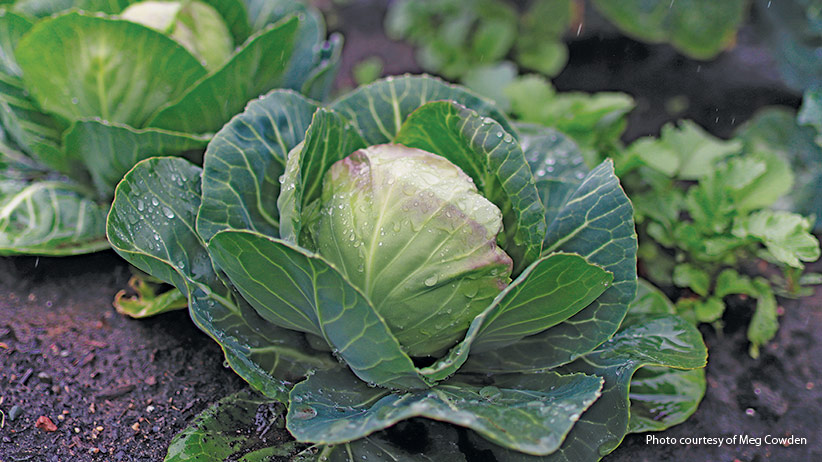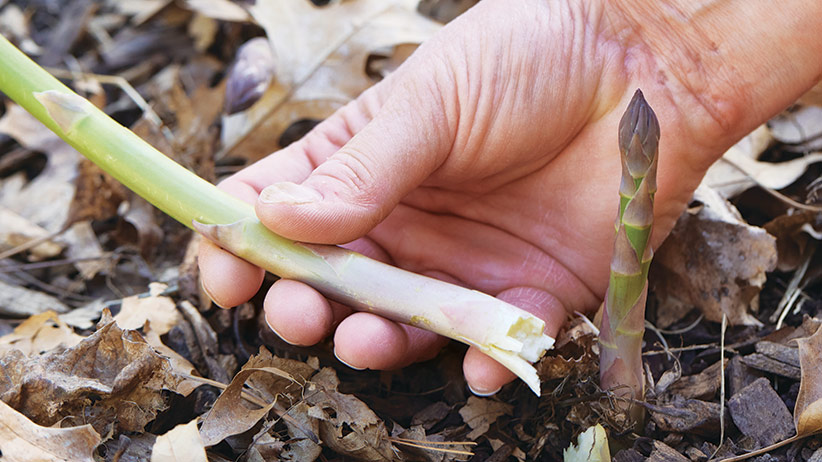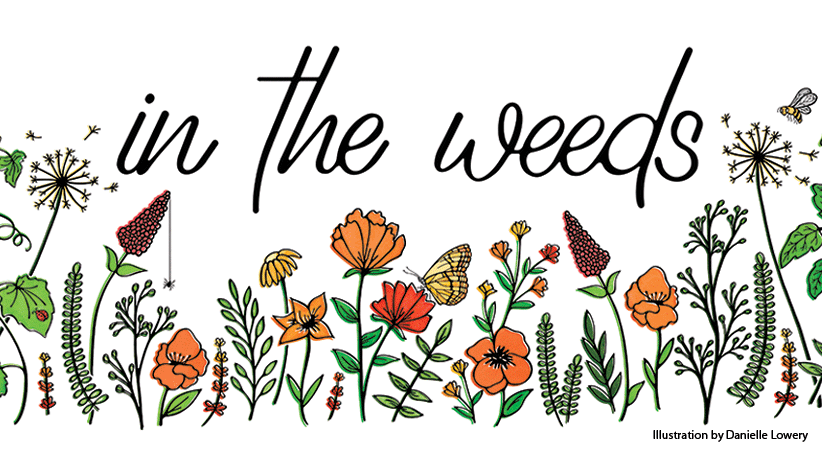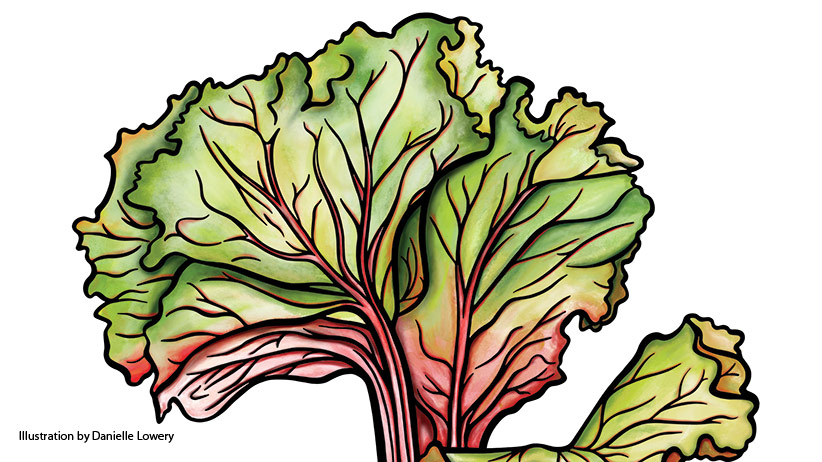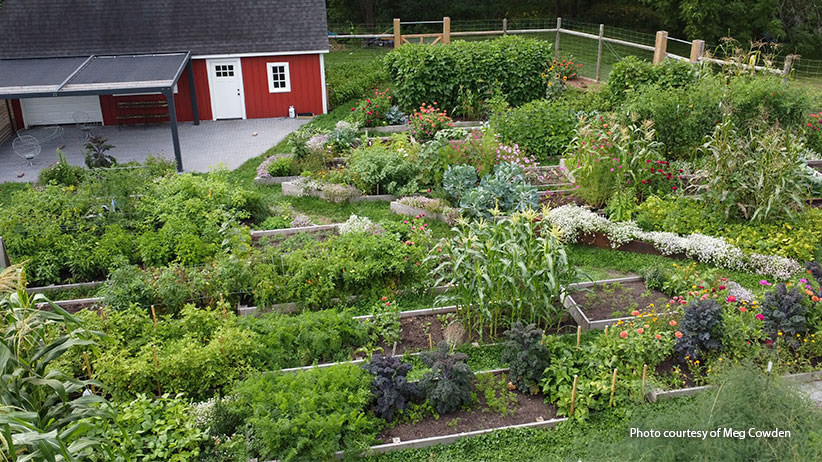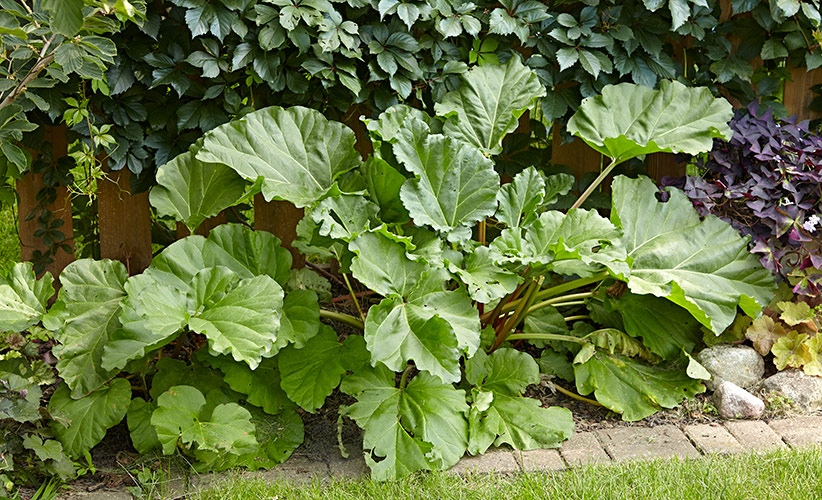
Rhubarb growing guide
Wouldn’t you love a plant in your vegetable garden that you didn’t have to start every year? Get a rhubarb patch going, and you’ll have plenty of this tasty fruit every spring and summer for pies, jams, sauces and syrups.
As a bonus, the plants are beautiful, with vibrant red stems and enormous green leaves. Here are four things you need to know to successfully grow this classic perennial. Whether you’re a seasoned gardener or a beginner, follow these tips for success and you’ll be able to enjoy its vibrant stems for many seasons, in both the garden and the kitchen.
Rhubarb (Rheum x hybridum)
Type Perennial
When to plant In early spring, when soil temperatures reach 50 degrees F, or in late fall when crowns are dormant
How many to plant One plant is enough for fresh eating and preserving for a family of four.
Light Full sun to part shade
Soil Fertile, moist, well draining
When to harvest When stalks are 12 to 18 inches long after the second or third year
Cold hardy USDA zones 3 to 8
Common rhubarb myth
MYTH: The entire rhubarb plant becomes poisonous by midsummer.
FACT: While the stems are never toxic, rhubarb leaves are poisonous in every season; don’t eat them!
Where is the best place to plant rhubarb?
Rhubarb thrives in full sun with fertile, moist, well-drained soil. Grow plants in an isolated spot where the roots won’t be disturbed from foot traffic or at the front of a border, where they’ll have room to spread. If you’re not sure which rhubarb variety is the best fit for your garden, check out a few commonly available varieties and the difference between them in “Different types of rhubarb to try!” below.
Even gardeners in zone 3 can count on rhubarb to be cold hardy. Although plants are super long- lived in northern gardens, in zones 7 and warmer, instead of full sun, plant in part shade to help prevent foliage scorch in summer’s heat. In zones 9 and warmer, treat rhubarb like a winter annual and harvest in March or April.
Grow rhubarb from crowns
You can start a rhubarb patch from seed, but the easiest way is to buy 1-year-old crowns or get divisions from a friend. Plant crowns 3 feet apart and 4 inches deep — crowding may encourage crown rot or powdery mildew. If you’re taking divisions, to reduce the risk of transplant shock, dig up the entire plant in early spring as soon as plants are starting to emerge or when it’s dormant in late fall. With a spade or a soil knife, split each plant into sections with two to three leaves. Replant divisions with the largest root systems at the same depth they were growing before you dug them up, and water them in.
How to fertilize rhubarb
For thick stems and big leaves, sprinkle a balanced granular fertilizer or spread 1 to 2 inches of aged manure around plants in early spring, avoiding the crown so the fertilizer doesn’t burn emerging growth.
Related Articles:
Best New Fruit & Vegetable Plant Introductions 2024
Maximize Your Harvest with Succession Planting
Watch Our Vegetable Gardening Series on YouTube
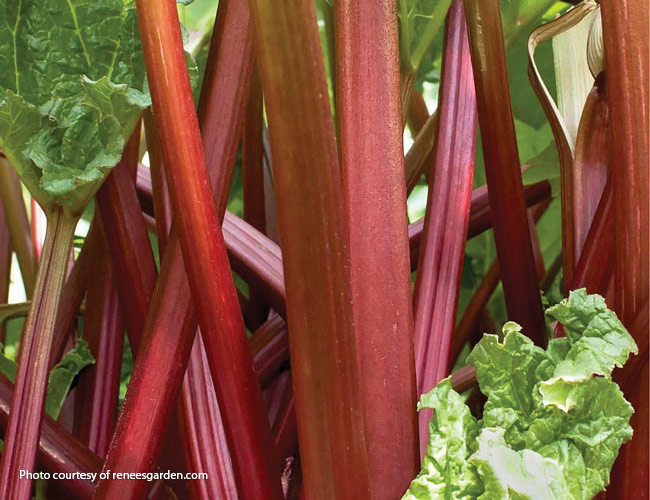
Different types of rhubarb to try!
Whether you're looking for classic, stringless or heat-tolerant varieties, there is a rhubarb for you. Check out a few of our favorites below:
‘Chipman’s Canada Red’ rhubarb
Heat-tolerant, 2- to 3-foot-tall-and-wide plants produce high yields of long, thick, deep red stalks. When cooked, the naturally sweet stalks maintain their color.
‘Crimson Red’ rhubarb
Stringless, brilliant crimson-red stalks produce a sweet and tart flavor on 2- to 4-foot-tall and 2- to 3-foot-wide plants. Shown above. Budded Root Divisions Available from Renee's Garden Seeds.
Hardy Tarty™ rhubarb
Heat-tolerant, thick, nonstringy red stalks with exceptionally tart flavor. 24- to 36-inch-tall and 24-to 30-inch-wide plants.
KangaRhu™ rhubarb
Heat-tolerant variety that produces dark red stalks that maintain color and flavor well when cooked. Plants are 24 to 36 inches tall and 24 to 30 inches wide.
‘MacDonald’ rhubarb
Tender red stalks are fast growing and highly resistant to root rot and wilt disease. Plants are 2 to 3 feet tall and 3 to 4 feet wide.
‘Victoria’ rhubarb
Heirloom variety that’s easy to grow from seed. Plants produce tender, thick, bright crimson and green stalks with a mild sweet flavor and no stringiness. Plants are 30 to 36 inches tall and 24 to 36 inches wide.
Rhubarb sources
- Gurney’s Seeds & Nursery Co.
- Jung Seeds, 800-247-5864
- Renee’s Garden Seeds, 888-880-7228
How to harvest rhubarb
If plants are grown from crowns, begin harvesting rhubarb in the second year, but if they were started from seed, wait until the third year to harvest. In late spring, when a stalk is 12 to 18 inches long, hold it firmly at the base, twist and pull to harvest. Cutting stems increases the risk of spreading disease, and leftover stubs are potential points of entry for pests. Harvest just a few stems at a time to avoid exhausting the plant. Remove leaves immediately to prevent stalks from wilting, wrap the stems in a damp paper towel inside a plastic bag, and store stems in the refrigerator until you’re ready to use them.
Stop harvesting in early summer when the plant is no longer sending up new stalks or you’ll reduce the quality and yield of next year’s crop. In summer, mature plants (three years or older) will start to bolt, or flower. Cut off their blooms so energy can go back to the crown for next year’s growth.
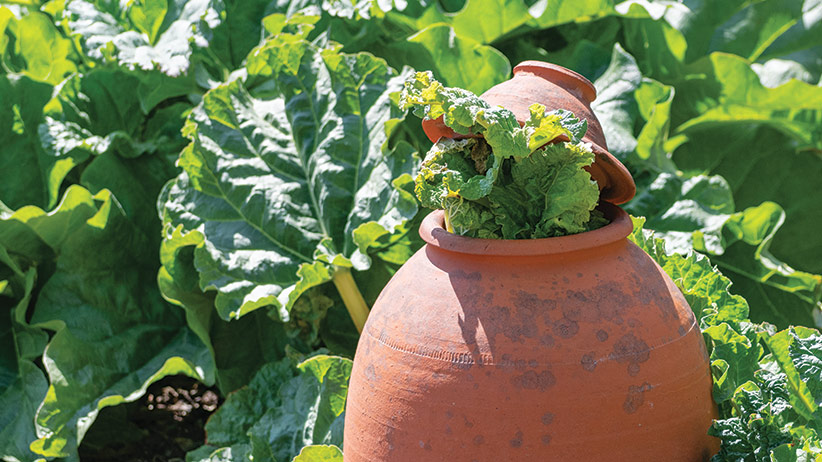
Did you know you can force rhubarb?
If you wish you could harvest rhubarb even earlier, try using a forcing pot! It's an easy and simple way for rhubarb enthusiasts to enjoy those sweet stalks even sooner. Learn more about how to force rhubarb here.









